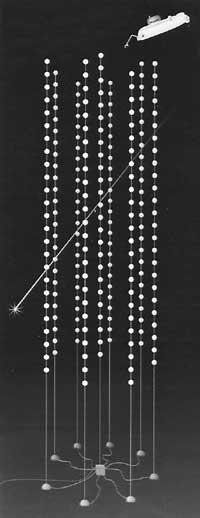Looking to detect neutrinos

Neutrino is a subatomic particle without mass or electric charge. They occur when two stars collide in the universe, when black holes disappear and other violent phenomena. However, the detection of these particles is very difficult, although every square centimeter of our planet per second is traversed by a hundred billion neutrinos. Although the flow of neutrino is spectacular, matter collides very few neutrinos, but when colliding it forms a heap (another particle) that leaves a trace of light.
The best place to observe this phenomenon is the ocean floor or the Antarctic pond. Since 1993 the network of detectors has been extended to 5,000 meters deep in the vicinity of Hawaii. In total they will be 216 and with these pearl necklace jewels you can know in what direction the neutrino has arrived when the muon is formed and what point of the Universe has arrived.
There is a similar organization under the Antarctic bank 2,000 meters deep. In 1991 the network began with twenty more detectors. In the Antarctic network it has been proven that the ice of the banquisa is very clean and that in the ocean there are no bioluminescent organisms that mix measurements, nor radioactive isotopes.





